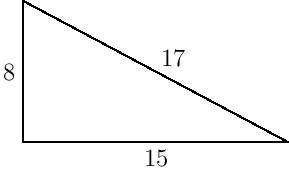
The CW complex structure of the Grassmannian
In a previous post, we briefly described the complex Grassmannian $\mathrm{Gr}(n,k)$ as a CW complex whose cells are the Schubert cells with respect to a chosen flag. We’ll now take a closer look at the details of this construction, along the lines of the exposition in this master’s thesis of Tuomas Tajakka (chapter 3) or Hatcher’s book Vector Bundles and $K$-theory (page 31), but with the aid of concrete examples.
Background on CW complexes
Let’s first review the notion of a CW complex (or cell complex), as described in Hatcher’s Algebraic Topology.
An $n$-cell is any topological space homeomorphic to the open ball $B_n=\{v\in\mathbb{R}^n:|v|<1\}$ in $\mathbb{R}^n$. Similarly an $n$-disk is a copy of the closure $\overline{B_n}=\{v\in \mathbb{R}^n:|v|\le 1\}$.
To construct a cell complex, one starts with a set of points called the $0$-skeleton $X^0$, and then attaches $1$-disks $D$ via continuous boundary maps from the boundary $\partial D$ (which simply consists of two points) to $X^0$. The result is a $1$-skeleton $X^1$, which essentially looks like a graph:
Higher specht polynomials
There are polynomials. There are Specht polynomials. And then there are higher Specht polynomials.
A colleague recently pointed out to me the results of this paper by Ariki, Terasoma, and Yamada, or more concisely summarized here. The authors give a basis of the ring of coinvariants \[R_n=\mathbb{C}[x_1,\ldots,x_n]/(e_1,\ldots,e_n)\] which, unlike the other bases we’ve discussed on this blog so far, respects the decomposition into irreducible $S_n$-modules. These basis elements include the ordinary Specht polynomials, but also some polynomials of higher degrees, hence the name ``higher’’ Specht polynomials.
Background: What is a Specht polynomial?
The construction of the irreducible representations of the symmetric group $S_n$ (called Specht modules) is often described in terms of ``polytabloids’’, but can be equivalently described in terms of a basis of Specht polynomials.
Schubert Calculus mini-course
I’ve written a lot about Schubert calculus here over the last few years, in posts such as Schubert Calculus, What do Schubert Curves, Young tableaux, and K-theory have in common? (Part II) and (Part III), and Shifted partitions and the Orthogonal Grassmannian.
Pythagorean triples on a sphere?
It’s 8/15/17, which means it’s time to celebrate! The three numbers making up the date today form a Pythagorean triple, a triple of positive integers $(a,b,c)$ with $a^2+b^2=c^2$. Indeed, $8^2+15^2=64+225=289=17^2$.
Alternatively, by the Pythagorean theorem, a Pythagorean triple is any triple of positive integers which make up the sides of a right triangle:
It’s exciting when all three sides are integers, since many common right triangles’ lengths involve square roots: $(1,1,\sqrt{2})$, $(1,2,\sqrt{5})$, and $(1,\sqrt{3},2)$, to name a few. And these sides aren’t even rational, which the poor Pythagorean scholar Hippasus discovered by proving that $\sqrt{2}$ is irrational and was subsequently drowned to death by his colleagues, according to some historical accounts. So the ancient Pythagoreans in fact only believed in right triangles having rational side lengths.
A faster divisibility rule for 7 (and 13)
I occasionally teach evening online classes for Art of Problem Solving (artofproblemsolving.com, a fantastic resource for high school students interested in learning mathematics), and one of the lessons I taught recently was on fast mental arithmetic tricks for testing divisibility by various small integers.
How do you tell if a number is divisible by $2$? Easy: look at the last digit. If that digit is even, the whole number is divisible by $2$, otherwise it’s not.
How do you tell if a number is divisible by $3$? Easy: Add up the digits and see if the sum is divisible by $3$. For instance, $1642$ is not divisible by $3$ because $1+6+4+2=13$ is not, but $1644$ is because $1+6+4+4=15$ is divisible by $3$.
The list goes on; there are nice, well-known divisibility rules for $4$, $5$, $6$, $8$, $9$, $10$, $11$, and $12$. But $7$ turns out to be rather annoying. Many of the existing texts on this subject use a recursive rule that goes something like this: Cross off the last digit, double that digit, and subtract it from the number that remains. Then keep doing that until you get a small number and see if the result is divisible by $7$.
Ouch.
